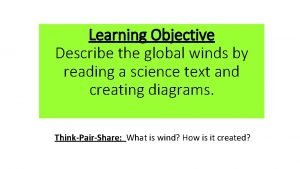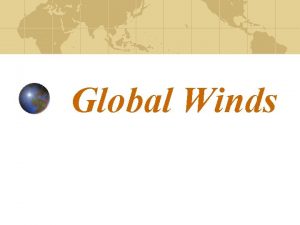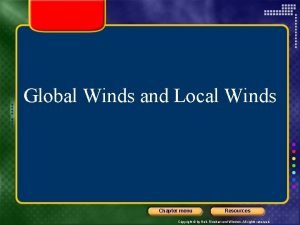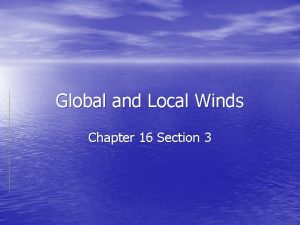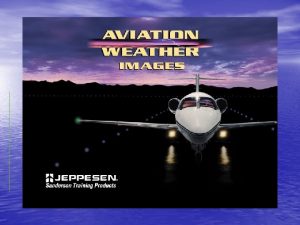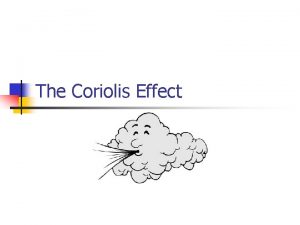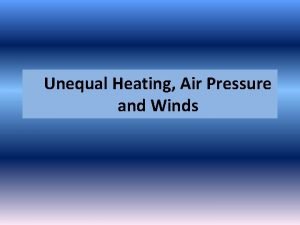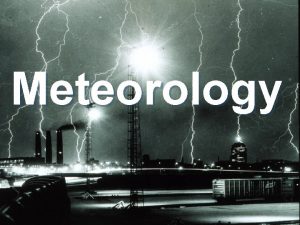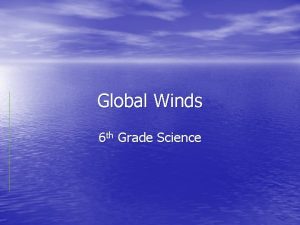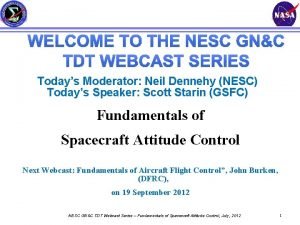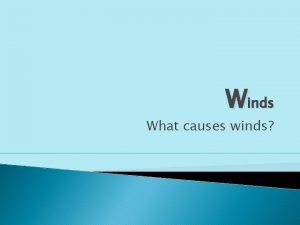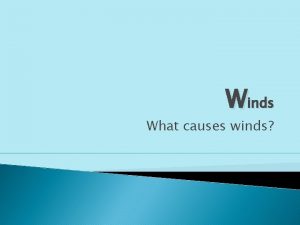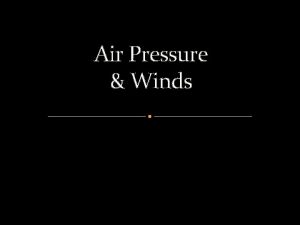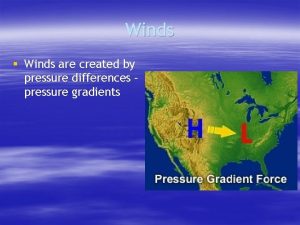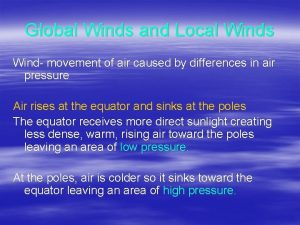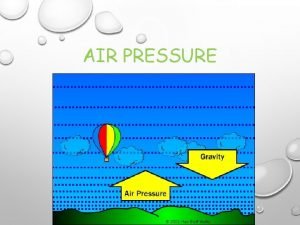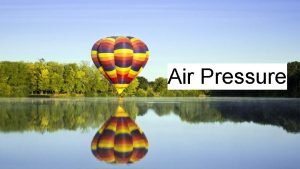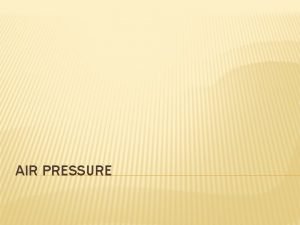Air Pressure Air Movement Pressure SystemsCyclones Local Winds












- Slides: 12

Air Pressure Air Movement Pressure Systems/Cyclones Local Winds

Air Pressure Basics • Air pressure = weight of atmosphere pressing down • Most of Earth’s air mass is in the lower atmosphere. –Moving from space to Earth’s surface, air pressure increases. • Change in atmospheric pressure = change in weather.

Mapping Air Pressure • Meteorologists use isobars to identify high pressure and low pressure air systems. – Isobars lines that connect areas of equal air pressure

Low Pressure Systems = Cyclones • The center of the isobar rings Bird’s Eye View with lowest pressure • Marked with “L” • Air moves: – UP – INTO Profile View – COUNTERCLOCKWISE • Rising air cools, condenses, & precipitates = cloudy & stormy weather

High Pressure Systems = Anticyclones • The center of isobar rings has highest pressure Bird’s Eye View • Marked with “H” • Air moves: – DOWN – OUT – CLOCKWISE Profile View • Sinking air warms and retains (keeps) its moisture = clear, dry weather

Low vs. High Pressure

Winds • Wind is air in motion. • The way air moves depends on 3 things: – Air pressure – Coriolis Effect – Shape of the land (topography)

1. Air Pressure • Air ALWAYS flows from high to low pressure. • Closer isobars = faster changes in pressure = faster air movement = stronger wind!!!

1. Air Pressure: Global Winds • Caused by temperature/pressure differences – Poles—cold—dense air sinks—pushes out air – Equator—hot—less dense air rises—leaves space

2. Coriolis Effect • Rotation of Earth causes winds to deflect/spin – Northern Hemisphere = deflected to the right (clockwise) – Southern Hemisphere = deflected to the left (counterclockwise)

3 a. Shape of the Land: Land Sea Breezes Warmer Land Breeze (Night time) Cool sea breeze Cooler Ocean Caused by low pressure over land Cool land breeze Cooler Land Warm air rises Sea Breeze (Day time) Warmer Caused by low Ocean pressure over water

3 b. Shape of the Land: Local Winds—Mountain and Valley Breezes Valley Breeze (Day time) Mountain Breeze (Night time)
 How does the air move in a sea breeze?
How does the air move in a sea breeze? Polar easterlies
Polar easterlies Calm area where warm air rises
Calm area where warm air rises Global winds and local winds
Global winds and local winds How are global winds and local winds different
How are global winds and local winds different What is the difference between global and local winds?
What is the difference between global and local winds? Local winds are produced by
Local winds are produced by Land breeze science
Land breeze science Local winds
Local winds Winds
Winds High pressure winds
High pressure winds High pressure winds
High pressure winds George‚äôs gyros
George‚äôs gyros

